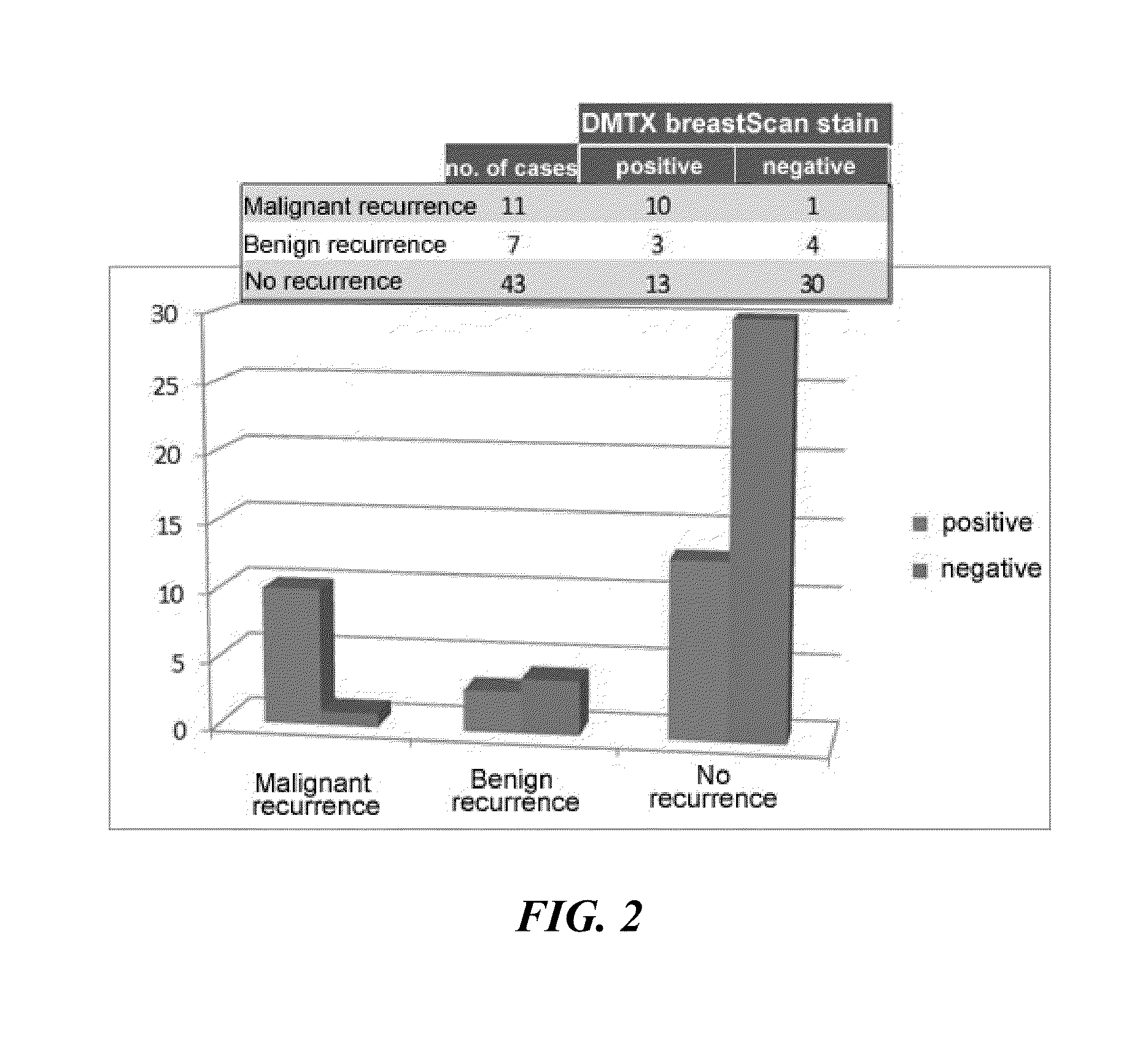Methods and products for prognosing the clinical evolution, or predicting the recurrence risk, of a papillary lesion of the breast
a papillary lesion and clinical evolution technology, applied in the field of methods and products for prognosing the clinical evolution, or predicting the recurrence risk, of a papillary lesion of the breast, can solve the problems of complex diagnosis of these lesions by means of morphology alone, and achieve the effect of low risk of recurren
- Summary
- Abstract
- Description
- Claims
- Application Information
AI Technical Summary
Benefits of technology
Problems solved by technology
Method used
Image
Examples
example 1
Differential Expression of proCOL11A1 in Intraductal Papillomas of the Breast and Correlation with Biological Aggressiveness
1.1 Materials and Methods
[0209]Sections of the core needle biopsies (CNB), fixed in formol and included in paraffin, from patients with at least 5 years of follow-up after extraction of the histological section were cut with a microtome. The 3-4 μm sections were dried overnight at 54-56° C. in an oven. Pre-treatment with CC2 [Cell Conditioning 2] buffer [Ventana Medical Systems, Inc.; catalog no. 950-123] was applied at 98° C. for 32 minutes. After titration to adjust the suitable antibody concentration, between 65, 26 and 13 μg / ml, the preparations were incubated with monoclonal antibody 1E8.33 specific for proCOL11A1 at a concentration of 26 μg / ml in Antibody diluent (Ventana-Roche, Tucson, Ariz.) for 32 minutes at room temperature. The “Optiview” (Ventana) detection system was used and developed with diaminobenzidine (DAB) (Ventana).
[0210...
PUM
| Property | Measurement | Unit |
|---|---|---|
| concentration | aaaaa | aaaaa |
| concentration | aaaaa | aaaaa |
| concentration | aaaaa | aaaaa |
Abstract
Description
Claims
Application Information
 Login to View More
Login to View More - R&D
- Intellectual Property
- Life Sciences
- Materials
- Tech Scout
- Unparalleled Data Quality
- Higher Quality Content
- 60% Fewer Hallucinations
Browse by: Latest US Patents, China's latest patents, Technical Efficacy Thesaurus, Application Domain, Technology Topic, Popular Technical Reports.
© 2025 PatSnap. All rights reserved.Legal|Privacy policy|Modern Slavery Act Transparency Statement|Sitemap|About US| Contact US: help@patsnap.com


